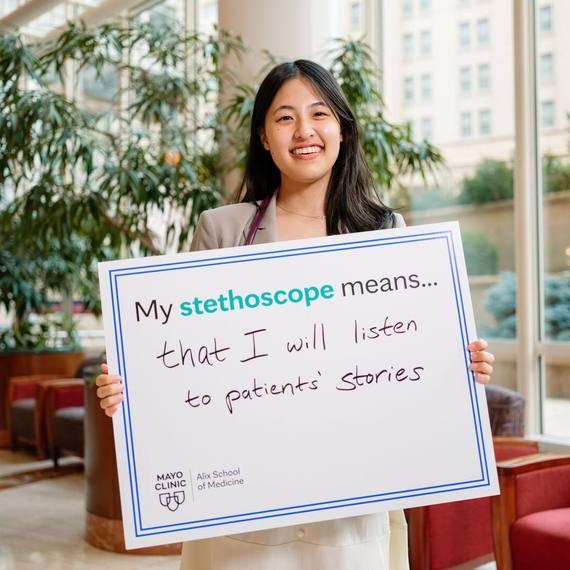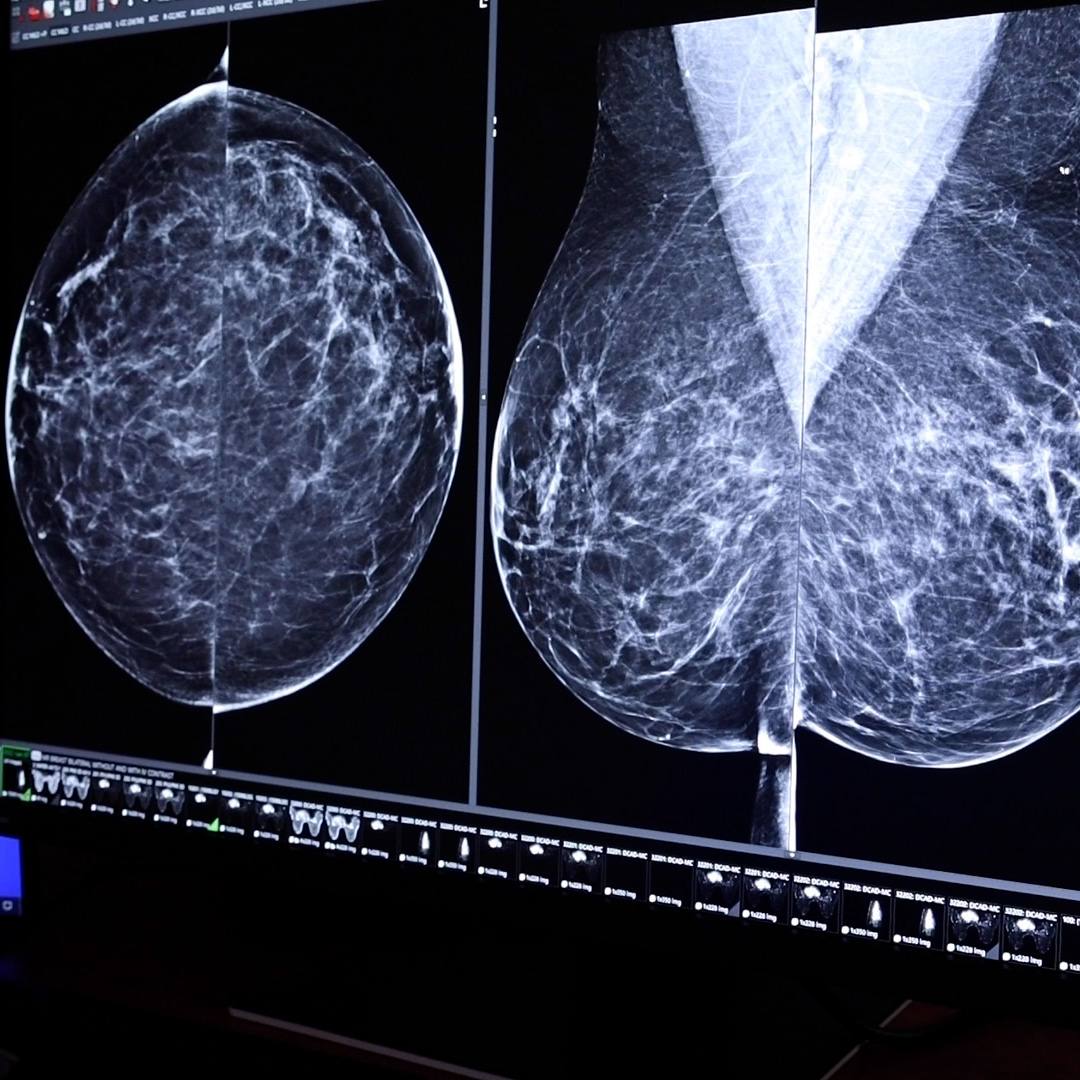-
Strong performance in 2018 bolsters Mayo Clinic’s humanitarian mission, resilience for future growth

ROCHESTER, Minn. — Mayo Clinic reported strong operational performance in 2018, affirming its status as a national leader for clinical quality, medical education and research discoveries that improve lives.
In 2018, more than 1.2 million patients sought Mayo Clinic's expertise at its destination campuses in Arizona, Florida and Minnesota, as well as across Mayo Clinic Health System. The organization continues to advance its mission and serve as a trusted source of hope and healing.
“2018 was an extraordinary year for Mayo Clinic by all measures,” says Gianrico Farrugia, M.D., president and CEO, Mayo Clinic. “These achievements are a result of the strong commitment of staff across our entire organization to serving our patients and our communities,” Dr. Farrugia says.
In 2018, U.S. News & World Report again named Mayo Clinic the best hospital in the nation, ranking it No. 1 in more specialties than any other hospital in the country. Mayo Clinic's Arizona campus ranked No. 1 in Arizona and No. 11 nationwide. Mayo Clinic's Florida campus was ranked No. 1 in the state.
The strong operational performance is particularly remarkable, since 2018 marked the end of Mayo Clinic’s implementation of a single electronic health record. This was the largest implementation project in Mayo Clinic history.
“Our strong performance in 2018 is due to the innovative and collaborative efforts by Mayo employees who adapted to changes across the organization while remaining focused on the best interest of our patients,” says Jeff Bolton, Mayo Clinic's chief administrative officer. “That success allowed us to reinvest in our people, our infrastructure and our mission, so we can better serve our patients and communities.”
Mayo Clinic reported that its total revenue grew 5.1 percent to $12.6 billion, with its net operating income totaling $706 million.
The strong financial performance also allowed Mayo to make a $339 million contribution to the pension plan for staff and allocate more than $724 million for capital projects.
“As a not-for-profit organization, Mayo Clinic focuses all assets on our mission, our patients and our communities. With the income generated, Mayo Clinic can continue to grow in size and scope, so we can serve more patients, invest in our staff, strengthen our commitments to education and research, and expand our reach nationally and internationally,” says Dennis Dahlen, chief financial officer, Mayo Clinic.
Mayo is extending its knowledge and its access in multiple ways. Mayo Clinic Care Network is an affiliation of more than 40 like-minded national and international health systems that collaborate on clinical care with access to Mayo engineering and consulting resources. They collectively served more than 12.5 million patients. Four new members joined in 2018.
Shaping the future of health care through research, education
Like everything at Mayo Clinic, patient needs drive teams of researchers and educators in their pursuit of answers to some of today's most pressing questions. Mayo's culture of collaboration and teamwork, and its extensive facilities and resources, make it possible for researchers to unravel and solve complex research questions. This close integration makes it possible to quickly bring newly discovered diagnostics and therapeutics to patients and share this knowledge with the next generation of doctors and scientists.
Funding of research and education in 2018 surpassed previous years, totaling $1.1 billion — an increase of 8.1 percent over 2017. More than half, or $590 million, is supported directly with funding from Mayo Clinic, while the remaining $560 million is from external sources that include government, foundations and industry grants.
Read on for Mayo Clinic's medical innovation advancements in 2018.
- Improving CAR-T therapy to treat cancer
- Epidural stimulation, physical therapy helps paralyzed man
- Advancing care through genomics
- Senescent cells research
Capital projects
Strategic investments in capital projects provide state-of-the-art facilities, equipment and technology to ensure Mayo Clinic can meet growing patient needs and demand for its services. Several significant projects totaling $1 billion moved forward in 2018:
- $648 million expansion of the Phoenix campus
- $190 million vertical expansion of the Gonda Building in Rochester
- $144 million for a new Mayo North Building and patient parking garage in Florida
- $86 million for several Mayo Clinic Health System projects including a new surgery center in Mankato, Minnesota; hospital expansion in Barron, Wisconsin; cancer center expansion in LaCrosse, Wisconsin; and campus expansion in Austin, Minnesota.
Supporting local community vibrancy, economic development and health needs
As the largest private employer in the state of Minnesota, and a major employer and economic engine in many communities it serves, Mayo Clinic is a dedicated community partner that strives to improve the lives of its patients, communities and society as a whole.
“Mayo is dedicated to giving back and supporting the needs of the communities it serves in many ways — through public health education, community-based research discovery programs, workforce and local development efforts, charitable donations, and community health improvement programs to address identified and unmet health needs,” says Bolton.
In 2018, Mayo provided:
- $589 million in care to people in need, including $78 million in charity care and $511 million in unpaid portions of Medicaid and other care programs for people who are uninsured or underinsured
- $2.2 billion in unpaid portions of Medicare and other senior programs
- $6 million in cash and in-kind donations to local communities
In 2018, Mayo accrued almost $30 million in income taxes and paid more than $95 million in MinnesotaCare taxes. And the organization remitted almost $13 million in sales and use tax, and paid almost $28 million in property taxes — contributing significantly to the local, state and national economies.
Mayo Clinic works collaboratively with local communities to address barriers to health, safety and independence for all residents. One example is the Rochester Affordable Housing Coalition, a community coalition formed by local partners, including Mayo Clinic, to support community-led projects to fulfill local housing needs. Addressing housing needs through the coalition also supports community health priorities, such as mental health and financial stress, and helps those in the community live healthier lives. Mayo Clinic also supports the Eviction Prevention program, which addresses financial stress and mental health — two of five health priorities in Olmsted County, Minnesota, that were identified through the most recent Olmsted County Community Health Needs Assessment.
In 2018, Mayo Clinic joined a coalition of seven hospitals and three philanthropic foundations to launch Civica Rx, a not-for-profit generic drug manufacturing company that will help patients by lowering costs and addressing critical shortages in supplies of essential generic pharmaceuticals.
Mayo Clinic 2018 financial highlights
In 2018, total revenue was $12.6 billion — an increase of 5.1 percent. Revenue growth for Mayo Clinic's destination sites in Arizona, Florida and Minnesota, as well as Mayo Clinic Health System, was driven by strong inpatient volumes, including growth in transplants, surgery inpatients and hospital admissions.
Diversified sources of revenue, including Mayo Clinic Laboratories and commercialization activity through Mayo Clinic Ventures, also contributed to the growth. This revenue reached more than $1.3 billion in 2018 — an increase of 8.8 percent over 2017.
Other financial highlights include:
- Revenue growth
Total revenue grew 5.1 percent to $12.6 billion, including an increase of 6.8 percent in medical service revenue from 2017. The growth was a result of larger increases in grants and contract revenues and allocated investment returns supporting current operations. - Solid operating and net income
Net operating income totaled $706 million, equal to net operating income in 2017. It was supported by internal endowment funding and benefactor support for operating activities to produce an operating margin of 5.6 percent. Net income totaled $554 million in 2018, which was down from $1.4 billion in 2017. This decrease was due entirely to the change in investment markets from 2017 to 2018. - Successful fundraising
Grateful patients and benefactors contributed $504 million to support Mayo Clinic programs in clinical practice, research and education — an increase of 18.9 percent over 2017. Additionally, benefactors provided $353 million in future commitments, which will support Mayo’s mission in the years ahead. Jay Alix, a loyal patient, Mayo Clinic trustee and long-time benefactor, made a transformational gift of $200 million designated for Mayo Clinic School of Medicine. The school was renamed Mayo Clinic Alix School of Medicine in his honor. - Robust investment
Capital expenditures totaled $724 million, of which $359 million was used for new facilities and technology projects, and $365 million was used to maintain and replace existing equipment and technology.
Looking ahead
Under the direction of Dr. Farrugia and Bolton, Mayo Clinic is committed to leading health care transformation by addressing the changing expectations of patients in a digital age and expanding its international reach.
“Our goal is to solve humanity's most serious and complex medical challenges, and our core focus will always remain on solving complex medical problems for patients close to home and from across the globe,” says Dr. Farrugia. “These strong achievements allow us to strategically and purposefully transform health, harnessing significant advancements in medical and digital technologies. I'm excited about Mayo's future and the opportunity to work with the best staff in health care to drive change, guided by the best interest of patients.”
Additional resources
- Mayo Clinic 2018 Consolidated Financial Report
- An Inside Look at Mayo Clinic 2019
- 2018 Operational Performance Highlights
###
About Mayo Clinic
Mayo Clinic is a nonprofit organization committed to clinical practice, education and research, providing expert, comprehensive care to everyone who needs healing. Learn more about Mayo Clinic. Visit the Mayo Clinic News Network.
Media contact:
- Duska Anastasijevic, Mayo Clinic Public Affairs, 507-284-5005, newsbureau@mayo.edu







